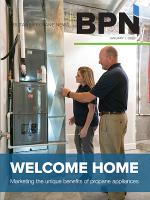Monday, January 13, 2020
(January 13, 2020) — Last June, the Missouri Propane Education and Research Council (MOPERC) wrapped up promotional activities for a model home at Lake of the Ozarks that featured propane appliances throughout. In partnership with developer Dave Leathers, the Propane Inspiration Home showcased the many benefits propane can provide for homeowners beyond space heating and hot water.
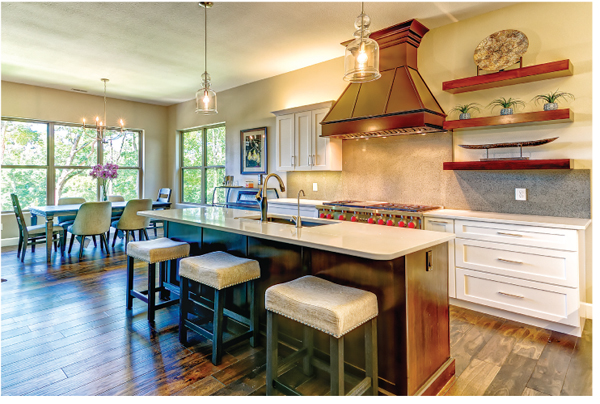
“The partnership was beneficial for all concerned,” Steve Ahrens, MOPERC president, told BPN. “The developer’s goal was to raise funds for a local food pantry through the sale of the home. MOPERC’s goal was to generate video and photo assets that we could use in future marketing. We both gained a new appreciation for working with homebuilders and subcontractors to incorporate propane appliances.”
A HOUSE IS BORN
The Inspiration Home opportunity came about through a conversation between Ahrens and Leathers, who also publishes lifestyle magazines from Cabo to Kansas City, including two that cover the Lake of the Ozarks region. “Dave has a fantastic product, and we have been longtime advertisers as the region is a great market for propane homes,” Ahrens said. “When he mentioned his Inspiration Home project, our participation seemed like a very good fit.”
The agreement called for the new home to feature a propane furnace, water heater, fireplace, stove, clothes dryer, outdoor grill and lighting, and a backup generator. MOPERC would provide funding to cover the acquisition, installation, and price differential on some appliances in exchange for the opportunity to promote the home and generate assets that could be used in other campaigns. Leathers would promote the home as well, holding open houses for local builders, real estate sales personnel, and home buyers, in addition to featuring the residence in his publications.
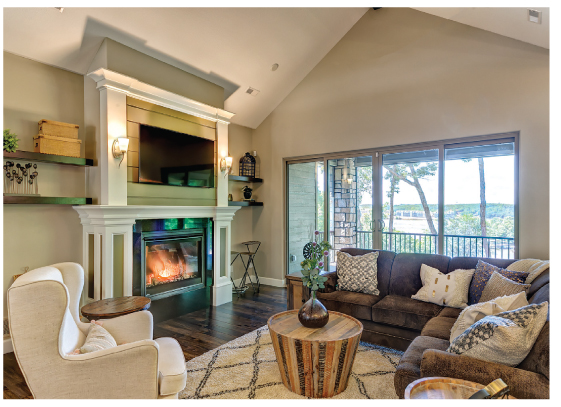
Strategically, the Council agreed to focus on the “flame” aspects of propane homes.
“While they generate most of the load, furnaces and water heaters are not the most exciting part of the home to promote,” Ahrens said. “We wanted to ensure the ‘wow’ factor of a propane home—the comfort of a fireplace, the security of a backup generator, the livability of outdoor appliances, and the appeal of an upscale range. Too often, we sell the economics of space and water heating and not the aspirational, emotional appeal that is unique to propane.”
MOPERC’s inaugural Inspiration Home project was built around a $150,000 outreach and education campaign that promoted the home and its specific features through social media, digital marketing, and print. Appliance installation and upfits added another $45,000. Early on, the Council developed a Welcome Home magazine that was sent to all Missouri dealers that kicked off the concept of whole-home promotion. Today, images from the Propane Inspiration Home are used throughout the state’s Welcome Home marketing effort.
“This was an opportunity to showcase the whole-home environment by creating images of a propane lifestyle,” Ahrens said. “We wanted potential customers to imagine themselves in that setting. Our ‘Welcome Home’ theme reinforces that aspirational message.”
There were only a few hiccups during the Propane Inspiration Home project. “First, the home sold much more quickly than we had anticipated. We had hoped for a few more open houses to promote the home, but were happy that it found a new and very enthusiastic owner,” Ahrens said. “Second, we learned that we have work to do with installer education. We were able to fix a code issue before the house was sold. This showed we need greater outreach to subcontractors.” Additionally, the outdoor lighting did not get installed (“I blew the appliance budget on the Viking range,” Ahrens admits) and plans for the addition of a fire pit were scrapped when landscaping wrapped up early.
When the Propane Inspiration Home was completed, MOPERC donated $1000 to the Share the Harvest charity in Leathers’ name. Once the photo and video work wrapped up, the Council began to consider how to extend the lessons learned on the project.
WHAT’S NEXT?
Results of the Inspiration Home project are still being evaluated, but have suggested a modified approach involving homebuilders. “We certainly know more today than we did before,” Ahrens said.
Currently, MOPERC is developing a new outreach called Propane HomePro. “We intend to generate the same assets and visibility as the Inspiration Home, but with more developers throughout the state and with a better handle on costs. We also will add an education component to reach the HVAC and installer techs who have such an important role in the safe use of our product.”
Through Propane HomePro, developers would receive financial assistance when installing certain appliances in a spec or model home. “We believe we can extend our resources by focusing on ‘last mile’ installations—those appliances that give a residence a ‘wow’ factor beyond the core load,” Ahrens said. “If the homebuilder is already installing a propane furnace and water heater in a showplace opportunity, we’d assist with an upscale stove or range, outdoor grill, a beautiful fireplace, and, most of all, a standby generator.”
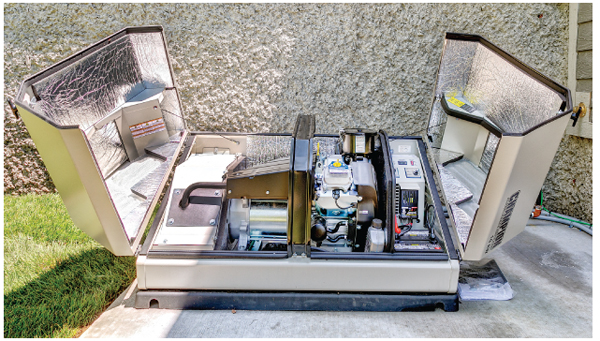
Interest is growing in propane generators, he said, but the economics of installing standby power at an all-electric home are sometimes a problem. “Getting a generator on a customer wish list early will help to drive more propane appliances throughout the home,” Ahrens said. “With rolling blackouts in California, or with winter storms knocking down electric lines here this winter, we have a compelling case for propane generators. However, we need to tie them to initial construction rather than a later add-on.”
MOPERC will once again promote Propane HomePro projects with open houses and advertising including a dedicated web page for the sites including promotion of the homebuilder and appliances. The Council will also include an HVAC education component for the homebuilder and subcontractors, part of the offer of free training to all homebuilders who sign up to receive Propane HomePro information.
“Whether a homebuilder is participating in a propane build now or could be later, there is value in reaching contractors with proper installation and compliance information,” Ahrens said. “If they sign up to receive our emails, that qualifies them as a Propane HomePro and makes them eligible to receive classroom compliance training at no cost. This also develops a list of potential candidates for future projects.”
Missouri has a state regulation that requires compliance training for anyone who handles, stores, transports, or installs propane or propane-use equipment. Currently, MOPERC teaches about 600 HVAC students annually, so the training apparatus is already there. Ahrens sees Propane HomePro as linking the state compliance training with PERC’s online resources to ensure that more installers are knowledgeable about important aspects of propane installations, from appliance placement to piping.
“The marketing benefits of the actual propane build are one important aspect, no doubt,” he said. “But the chance to get in front of homebuilders with propane benefits and safety is a real opportunity.” Once the program gets rolling, Ahrens sees the opportunity for special hands-on teaching opportunities at the build sites such as generator piping and placement, underground tank installations, and more.
Initially, builder compensation packages were estimated from $25,000 to $50,000 per project. “The Propane HomePro builder budget is $100,000, so we are hoping to work with two to four contractors this year. We have three right now that will probably exhaust the budget, but they are nicely spaced across the state and will have different levels of homes, which is a plus.”
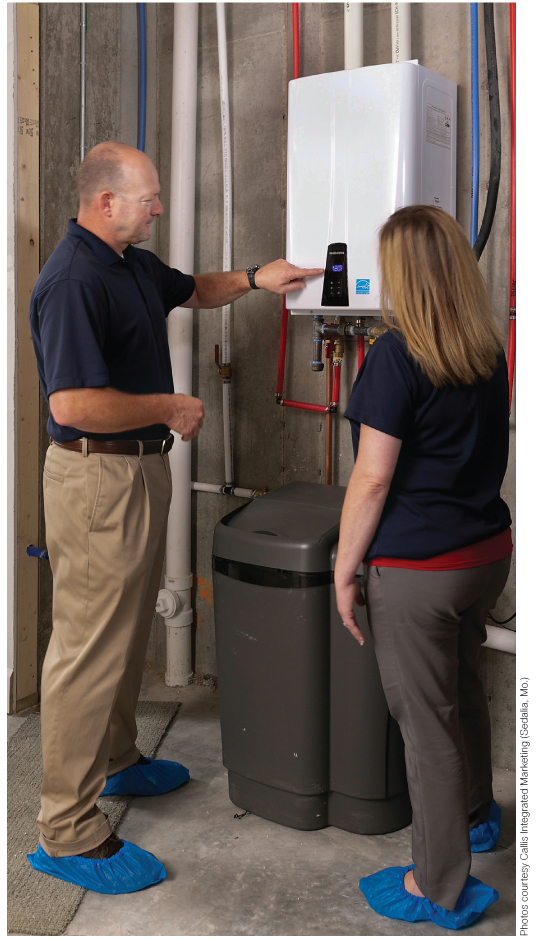
Promotion costs will mirror last year’s Inspiration Home project. Providing tech education is another expense, but that cost has not been determined yet. “Ideally, we’d work interested techs into our existing schedule to eliminate the need for additional classes, but we are prepared to ramp this up as necessary,” Ahrens said.
2020 HOMEPRO PARTNERS
Missouri’s marketers have already been active in contacting local homebuilders who may be interested in a Propane HomePro partnership.
One potential new partner is Joplin, Mo.-based TR Smith Construction, which works closely with Charlie Neidert, president of Neosho, Mo.-based Al’s Gas. “There’s no need to sell them. They’ve always been pro-propane,” Neidert said. “We need more builders like them.”
Julie Smith, a co-owner of TR Smith Construction along with her husband, Tony, said propane is a key component of their personal home and they believe in it strongly enough to promote propane homes to their customers. “I wouldn’t live in an electric home,” Smith said. “With the Missouri cold that comes about every winter, gas heat provides a thorough and much higher quality of warmth than electric heat in our climate.”
She acknowledges many contractors are attracted to building electric homes because of potentially lower building and installation costs. “They aren’t saving their homebuyers any money in the long run, though. The cost of electricity and gas never go away during the time of home ownership,” Smith said. “Over time, the utility bills will speak for themselves and propane will save them money. We want our buyers to be happy with their home long-term and an energy-efficient home running on propane brings about not only happiness, but also pride.” Of the 30 to 40 homes TR Smith builds each year, 90% of them are custom homes. As a result, Smith spends plenty of time with each buyer discussing the attributes they want in their home. “With a little education, customers quickly become believers in a propane home as the way to go,” she added. “Energy efficiency is a trend that consumers are really interested in. Propane excels versus electric in energy efficiency and cost savings.” Smith also noted that the various rebates available from MOPERC as well as the national PERC are added cost-saving incentives for building with propane.
Larry Eggen, a manager for MFA Oil in Warrensburg, Mo., would like to see a propane-fueled model home in his area. “People need to see the propane-powered features for themselves. This is the ‘Show-Me’ State, after all,” he said. “Once people experience the propane-powered home firsthand, they’re really sold. Once they have used a propane dryer, you couldn’t give them an electric dryer.”
Eggen’s son-in-law is a builder in the Warrensburg area and is in the process of building a subdivision that will be a gated community of $600,000 to $700,000 houses with many features fueled by propane. “With proper training, propane appliances and the piping are very easy to install,” Eggen said. “I’d like to see more plumbers and other technicians get the training and experience so that they feel they are able to install propane-powered features in upscale homes. I think all too often some plumbers talk customers out of propane features because they don’t like to install the gas lines or just don’t have the experience. It is time for us to help them to get more interested in doing it.”
Eggen acknowledges there is a fear of gas among some consumers. “I hear it from some customers, but frankly as a volunteer firefighter, the fire department goes to more electric fires than gas fires,” he explained. “We need to tell our story [by providing customers an] opportunity to visit and experience propane-powered homes throughout the entire state. I think once people experience features like gas logs, the true quality of gas heat from a furnace, and heated water from a tankless water heater, they will be sold.” Eggen believes a few model homes should always be accessible within an hour of high-growth areas, beyond the natural gas lines. These could do wonders for consumer buy-in to the benefits of propane. “We could really add a lot of propane load for our retail companies by getting people out to walk through a propane-powered home.”
A third potential partner in northern Missouri is adding homes in a rural setting that is perfect for propane. “We haven’t closed the loop yet, but we are interested to talk to the builder about partnering with us to highlight the benefits of his proposed development,” Ahrens said. “This will give us a nice, diverse inventory of images, testimonials, and assets.”
MAKING THE CONNECTIONS
While MOPERC develops its Propane HomePro program, the Council continues to work closely with Sedalia, Mo.-based Callis Marketing to guide the next phase of the “Welcome Home” outreach and education campaign.
“We’re keeping the ‘Welcome Home’ theme in our state marketing,” said Ahrens. “This is in addition to PERC’s ‘Propane Can Do That’ theme line. We don’t want to overthink it, but combining the aspirational message plus the national tagline seems to make sense for the residential market.”
Cliff Callis, president of the marketing firm, confirms that the initial Propane Inspiration Home generated a variety of creative assets that could be incorporated into videos, magazines, social media, and other means that tell the propane story for those who did not visit the home. “We are moving forward with a very flexible plan. We can fine-tune our approach as we move forward and learn more about what is working and what is not with the marketing efforts,” Callis said. Regardless of details, he sees the Inspiration Home project and its successor program as WIN-WIN-WIN opportunities:
• CONSUMERS WIN with a nice new propane-powered home.
• BUILDERS WIN with financial support, free training, and installation support. They also get help to sell the home.
• RETAIL PROPANE MARKETERS WIN with good new customers and increased propane load.
Ahrens concludes that the bottom line is to add more propane homes and a greater variety of burner tips statewide. “About 9% of the state’s homes already use propane as their primary heating source. We’ve lost gallons to electricity and natural gas, like everyone else, but have a great base from which to grow or retake market share.”
MOPERC’s residential efforts are supported by the findings of a recent survey of appliance rebate customers. The survey found that propane customers are loyal and knowledgeable about the product. “It wasn’t part of our messaging before, but we heard that our current consumers understand that electricity is not inexpensive. The average Missouri kilowatt/hour cost is about twice the average cost of propane on a Btu basis,” Ahrens said. “They also are not happy with the lack of heat generated by ground-source heat pumps.”
“Missourians are looking for clean, reliable, efficient, affordable, safe, and versatile energy. We check all those boxes—every single one—but we need to be aggressive in demonstrating exactly what those benefits are.
“Because of lessons learned from the Propane Inspiration Home, we can take the next steps to address these unmet needs. Propane HomePro is our next iteration, and a year from now we will know even more. But the bottom line is that nothing sells the whole-home benefits of propane better than a beautiful new residence that highlights propane throughout.” — Pat Thornton

“The partnership was beneficial for all concerned,” Steve Ahrens, MOPERC president, told BPN. “The developer’s goal was to raise funds for a local food pantry through the sale of the home. MOPERC’s goal was to generate video and photo assets that we could use in future marketing. We both gained a new appreciation for working with homebuilders and subcontractors to incorporate propane appliances.”
A HOUSE IS BORN
The Inspiration Home opportunity came about through a conversation between Ahrens and Leathers, who also publishes lifestyle magazines from Cabo to Kansas City, including two that cover the Lake of the Ozarks region. “Dave has a fantastic product, and we have been longtime advertisers as the region is a great market for propane homes,” Ahrens said. “When he mentioned his Inspiration Home project, our participation seemed like a very good fit.”
The agreement called for the new home to feature a propane furnace, water heater, fireplace, stove, clothes dryer, outdoor grill and lighting, and a backup generator. MOPERC would provide funding to cover the acquisition, installation, and price differential on some appliances in exchange for the opportunity to promote the home and generate assets that could be used in other campaigns. Leathers would promote the home as well, holding open houses for local builders, real estate sales personnel, and home buyers, in addition to featuring the residence in his publications.

Strategically, the Council agreed to focus on the “flame” aspects of propane homes.
“While they generate most of the load, furnaces and water heaters are not the most exciting part of the home to promote,” Ahrens said. “We wanted to ensure the ‘wow’ factor of a propane home—the comfort of a fireplace, the security of a backup generator, the livability of outdoor appliances, and the appeal of an upscale range. Too often, we sell the economics of space and water heating and not the aspirational, emotional appeal that is unique to propane.”
MOPERC’s inaugural Inspiration Home project was built around a $150,000 outreach and education campaign that promoted the home and its specific features through social media, digital marketing, and print. Appliance installation and upfits added another $45,000. Early on, the Council developed a Welcome Home magazine that was sent to all Missouri dealers that kicked off the concept of whole-home promotion. Today, images from the Propane Inspiration Home are used throughout the state’s Welcome Home marketing effort.
“This was an opportunity to showcase the whole-home environment by creating images of a propane lifestyle,” Ahrens said. “We wanted potential customers to imagine themselves in that setting. Our ‘Welcome Home’ theme reinforces that aspirational message.”
There were only a few hiccups during the Propane Inspiration Home project. “First, the home sold much more quickly than we had anticipated. We had hoped for a few more open houses to promote the home, but were happy that it found a new and very enthusiastic owner,” Ahrens said. “Second, we learned that we have work to do with installer education. We were able to fix a code issue before the house was sold. This showed we need greater outreach to subcontractors.” Additionally, the outdoor lighting did not get installed (“I blew the appliance budget on the Viking range,” Ahrens admits) and plans for the addition of a fire pit were scrapped when landscaping wrapped up early.
When the Propane Inspiration Home was completed, MOPERC donated $1000 to the Share the Harvest charity in Leathers’ name. Once the photo and video work wrapped up, the Council began to consider how to extend the lessons learned on the project.
WHAT’S NEXT?
Results of the Inspiration Home project are still being evaluated, but have suggested a modified approach involving homebuilders. “We certainly know more today than we did before,” Ahrens said.
Currently, MOPERC is developing a new outreach called Propane HomePro. “We intend to generate the same assets and visibility as the Inspiration Home, but with more developers throughout the state and with a better handle on costs. We also will add an education component to reach the HVAC and installer techs who have such an important role in the safe use of our product.”
Through Propane HomePro, developers would receive financial assistance when installing certain appliances in a spec or model home. “We believe we can extend our resources by focusing on ‘last mile’ installations—those appliances that give a residence a ‘wow’ factor beyond the core load,” Ahrens said. “If the homebuilder is already installing a propane furnace and water heater in a showplace opportunity, we’d assist with an upscale stove or range, outdoor grill, a beautiful fireplace, and, most of all, a standby generator.”

Interest is growing in propane generators, he said, but the economics of installing standby power at an all-electric home are sometimes a problem. “Getting a generator on a customer wish list early will help to drive more propane appliances throughout the home,” Ahrens said. “With rolling blackouts in California, or with winter storms knocking down electric lines here this winter, we have a compelling case for propane generators. However, we need to tie them to initial construction rather than a later add-on.”
MOPERC will once again promote Propane HomePro projects with open houses and advertising including a dedicated web page for the sites including promotion of the homebuilder and appliances. The Council will also include an HVAC education component for the homebuilder and subcontractors, part of the offer of free training to all homebuilders who sign up to receive Propane HomePro information.
“Whether a homebuilder is participating in a propane build now or could be later, there is value in reaching contractors with proper installation and compliance information,” Ahrens said. “If they sign up to receive our emails, that qualifies them as a Propane HomePro and makes them eligible to receive classroom compliance training at no cost. This also develops a list of potential candidates for future projects.”
Missouri has a state regulation that requires compliance training for anyone who handles, stores, transports, or installs propane or propane-use equipment. Currently, MOPERC teaches about 600 HVAC students annually, so the training apparatus is already there. Ahrens sees Propane HomePro as linking the state compliance training with PERC’s online resources to ensure that more installers are knowledgeable about important aspects of propane installations, from appliance placement to piping.
“The marketing benefits of the actual propane build are one important aspect, no doubt,” he said. “But the chance to get in front of homebuilders with propane benefits and safety is a real opportunity.” Once the program gets rolling, Ahrens sees the opportunity for special hands-on teaching opportunities at the build sites such as generator piping and placement, underground tank installations, and more.
Initially, builder compensation packages were estimated from $25,000 to $50,000 per project. “The Propane HomePro builder budget is $100,000, so we are hoping to work with two to four contractors this year. We have three right now that will probably exhaust the budget, but they are nicely spaced across the state and will have different levels of homes, which is a plus.”

Promotion costs will mirror last year’s Inspiration Home project. Providing tech education is another expense, but that cost has not been determined yet. “Ideally, we’d work interested techs into our existing schedule to eliminate the need for additional classes, but we are prepared to ramp this up as necessary,” Ahrens said.
2020 HOMEPRO PARTNERS
Missouri’s marketers have already been active in contacting local homebuilders who may be interested in a Propane HomePro partnership.
One potential new partner is Joplin, Mo.-based TR Smith Construction, which works closely with Charlie Neidert, president of Neosho, Mo.-based Al’s Gas. “There’s no need to sell them. They’ve always been pro-propane,” Neidert said. “We need more builders like them.”
Julie Smith, a co-owner of TR Smith Construction along with her husband, Tony, said propane is a key component of their personal home and they believe in it strongly enough to promote propane homes to their customers. “I wouldn’t live in an electric home,” Smith said. “With the Missouri cold that comes about every winter, gas heat provides a thorough and much higher quality of warmth than electric heat in our climate.”
She acknowledges many contractors are attracted to building electric homes because of potentially lower building and installation costs. “They aren’t saving their homebuyers any money in the long run, though. The cost of electricity and gas never go away during the time of home ownership,” Smith said. “Over time, the utility bills will speak for themselves and propane will save them money. We want our buyers to be happy with their home long-term and an energy-efficient home running on propane brings about not only happiness, but also pride.” Of the 30 to 40 homes TR Smith builds each year, 90% of them are custom homes. As a result, Smith spends plenty of time with each buyer discussing the attributes they want in their home. “With a little education, customers quickly become believers in a propane home as the way to go,” she added. “Energy efficiency is a trend that consumers are really interested in. Propane excels versus electric in energy efficiency and cost savings.” Smith also noted that the various rebates available from MOPERC as well as the national PERC are added cost-saving incentives for building with propane.
Larry Eggen, a manager for MFA Oil in Warrensburg, Mo., would like to see a propane-fueled model home in his area. “People need to see the propane-powered features for themselves. This is the ‘Show-Me’ State, after all,” he said. “Once people experience the propane-powered home firsthand, they’re really sold. Once they have used a propane dryer, you couldn’t give them an electric dryer.”
Eggen’s son-in-law is a builder in the Warrensburg area and is in the process of building a subdivision that will be a gated community of $600,000 to $700,000 houses with many features fueled by propane. “With proper training, propane appliances and the piping are very easy to install,” Eggen said. “I’d like to see more plumbers and other technicians get the training and experience so that they feel they are able to install propane-powered features in upscale homes. I think all too often some plumbers talk customers out of propane features because they don’t like to install the gas lines or just don’t have the experience. It is time for us to help them to get more interested in doing it.”
Eggen acknowledges there is a fear of gas among some consumers. “I hear it from some customers, but frankly as a volunteer firefighter, the fire department goes to more electric fires than gas fires,” he explained. “We need to tell our story [by providing customers an] opportunity to visit and experience propane-powered homes throughout the entire state. I think once people experience features like gas logs, the true quality of gas heat from a furnace, and heated water from a tankless water heater, they will be sold.” Eggen believes a few model homes should always be accessible within an hour of high-growth areas, beyond the natural gas lines. These could do wonders for consumer buy-in to the benefits of propane. “We could really add a lot of propane load for our retail companies by getting people out to walk through a propane-powered home.”
A third potential partner in northern Missouri is adding homes in a rural setting that is perfect for propane. “We haven’t closed the loop yet, but we are interested to talk to the builder about partnering with us to highlight the benefits of his proposed development,” Ahrens said. “This will give us a nice, diverse inventory of images, testimonials, and assets.”
MAKING THE CONNECTIONS
While MOPERC develops its Propane HomePro program, the Council continues to work closely with Sedalia, Mo.-based Callis Marketing to guide the next phase of the “Welcome Home” outreach and education campaign.
“We’re keeping the ‘Welcome Home’ theme in our state marketing,” said Ahrens. “This is in addition to PERC’s ‘Propane Can Do That’ theme line. We don’t want to overthink it, but combining the aspirational message plus the national tagline seems to make sense for the residential market.”
Cliff Callis, president of the marketing firm, confirms that the initial Propane Inspiration Home generated a variety of creative assets that could be incorporated into videos, magazines, social media, and other means that tell the propane story for those who did not visit the home. “We are moving forward with a very flexible plan. We can fine-tune our approach as we move forward and learn more about what is working and what is not with the marketing efforts,” Callis said. Regardless of details, he sees the Inspiration Home project and its successor program as WIN-WIN-WIN opportunities:
• CONSUMERS WIN with a nice new propane-powered home.
• BUILDERS WIN with financial support, free training, and installation support. They also get help to sell the home.
• RETAIL PROPANE MARKETERS WIN with good new customers and increased propane load.
Ahrens concludes that the bottom line is to add more propane homes and a greater variety of burner tips statewide. “About 9% of the state’s homes already use propane as their primary heating source. We’ve lost gallons to electricity and natural gas, like everyone else, but have a great base from which to grow or retake market share.”
MOPERC’s residential efforts are supported by the findings of a recent survey of appliance rebate customers. The survey found that propane customers are loyal and knowledgeable about the product. “It wasn’t part of our messaging before, but we heard that our current consumers understand that electricity is not inexpensive. The average Missouri kilowatt/hour cost is about twice the average cost of propane on a Btu basis,” Ahrens said. “They also are not happy with the lack of heat generated by ground-source heat pumps.”
“Missourians are looking for clean, reliable, efficient, affordable, safe, and versatile energy. We check all those boxes—every single one—but we need to be aggressive in demonstrating exactly what those benefits are.
“Because of lessons learned from the Propane Inspiration Home, we can take the next steps to address these unmet needs. Propane HomePro is our next iteration, and a year from now we will know even more. But the bottom line is that nothing sells the whole-home benefits of propane better than a beautiful new residence that highlights propane throughout.” — Pat Thornton

